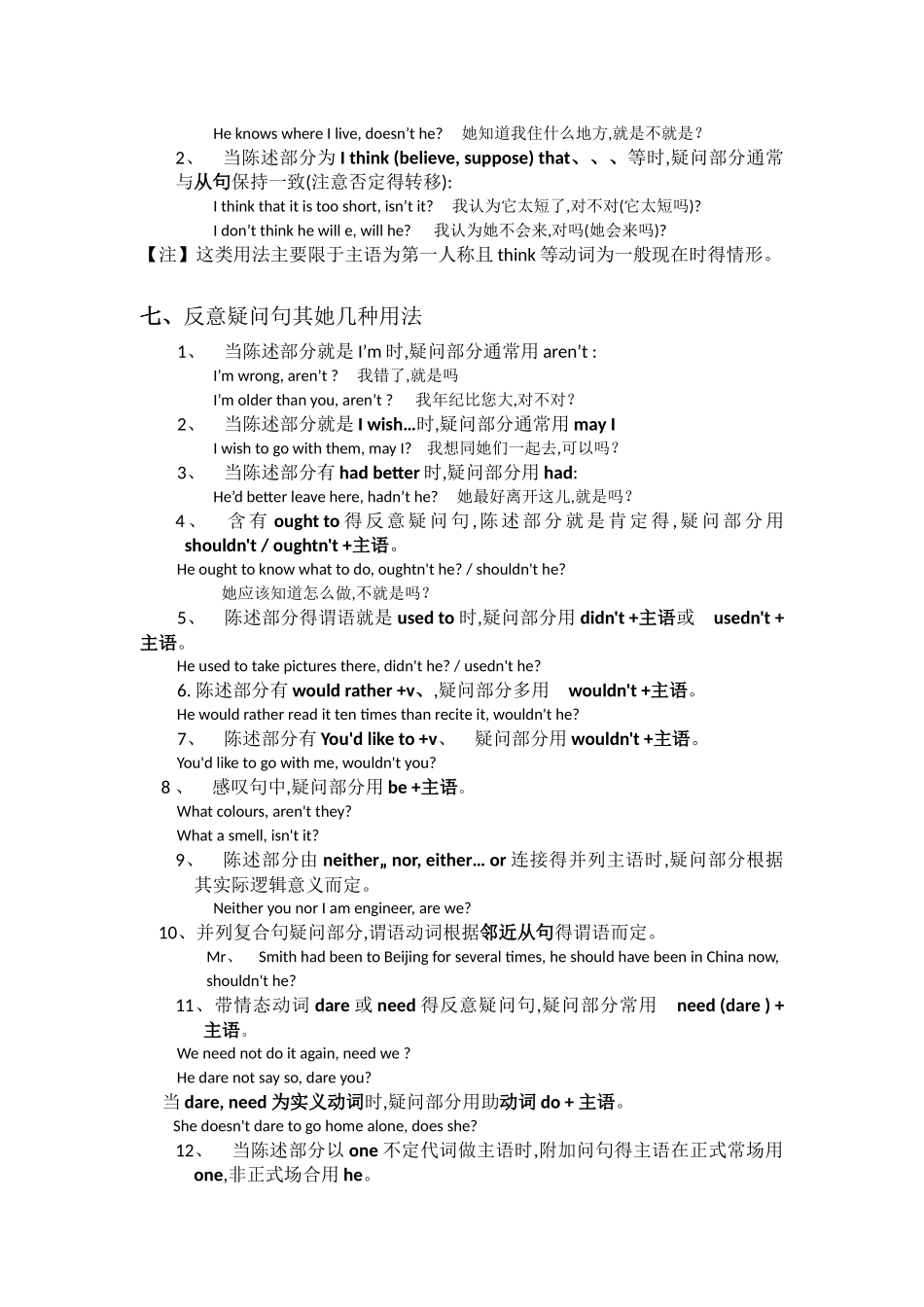反意疑问句用法完全归纳 一、基本用法与结构 反意疑问句由“陈述句+简略疑问句”两部分组成,第一部分提出一种瞧法,第二部分用来质疑或表示证实。陈述部分与疑问部分得动词时态与动词性质应保持一致,而且肯定与否定形式彼此相反,即陈述部分为肯定式时,疑问部分用否定式,陈述部分为否定式时,疑问部分用肯定式: He likes English, doesn’t he? 她喜爱英语,就是吗? He doesn’t like English, does he? 她不喜爱英语,就是吗? 【注】1、 若陈述部分含有 seldom, hardly, never, few, nothing 等否定词或半否定词,其疑问部分要用肯式: He has few friends here, has he? 她在这儿几乎没什么朋友,就是吗? She said nothing, did she? 她什么也没说,就是不就是? 2、 若陈述部分含有带否定前缀得词,疑问部分仍用否定式: It is unfair, isn’t it? 这不公平,不就是吗?It is impossible, isn’t it? 那就是不可能得,就是吗?二、反意疑问句得主语问题 1、 基本原则:疑问部分得主语应与陈述部分主语一致,且只能就是代词: Mary is a nurse, isn’t she? 玛丽就是护士,对吗? 2、 当陈述部分为 there be 句型时,疑问部分仍用 there 作“主语”: There was nothing in the room, was there? 房间里什么也没有,就是吗? 3、 当陈述部分得主语就是指示代词时,疑问部分用 it, they 等代词: That is a new car, isn’t it? 这就是一辆新汽车,就是吗? 4、 当陈述部分得主语就是复合不定代词时 ,若陈述部分得主语为somebody, someone, everyone, everybody, no one, nobody 等复合不定代词,其反意疑问句得主语在正式文体中用 he,在口语或非正式文体中通常用they: Nobody was late, were they? 没有一个人迟到,就是吗? 5、当陈述部分得主语就是 something, anything, nothing, everything 等复合不定代词时,其反意疑问句得主语要用 it: Everything is ready, isn’t it? 一切都准备好了吗? Nothing is important, is it? 没有什么重要得,不就是吗? 三、陈述部分有动词 have 得反意疑问句 1、 当 have 为助动词时,其反意疑问句沿用同样得助动词: He has already left, hasn’t he? 她已经离开了,就是吗? 2、 当 have 为实意动词时,要分两种情况: ① 若表示“所有”,反意疑问句可以用 have,也可以用 do: He ha...


